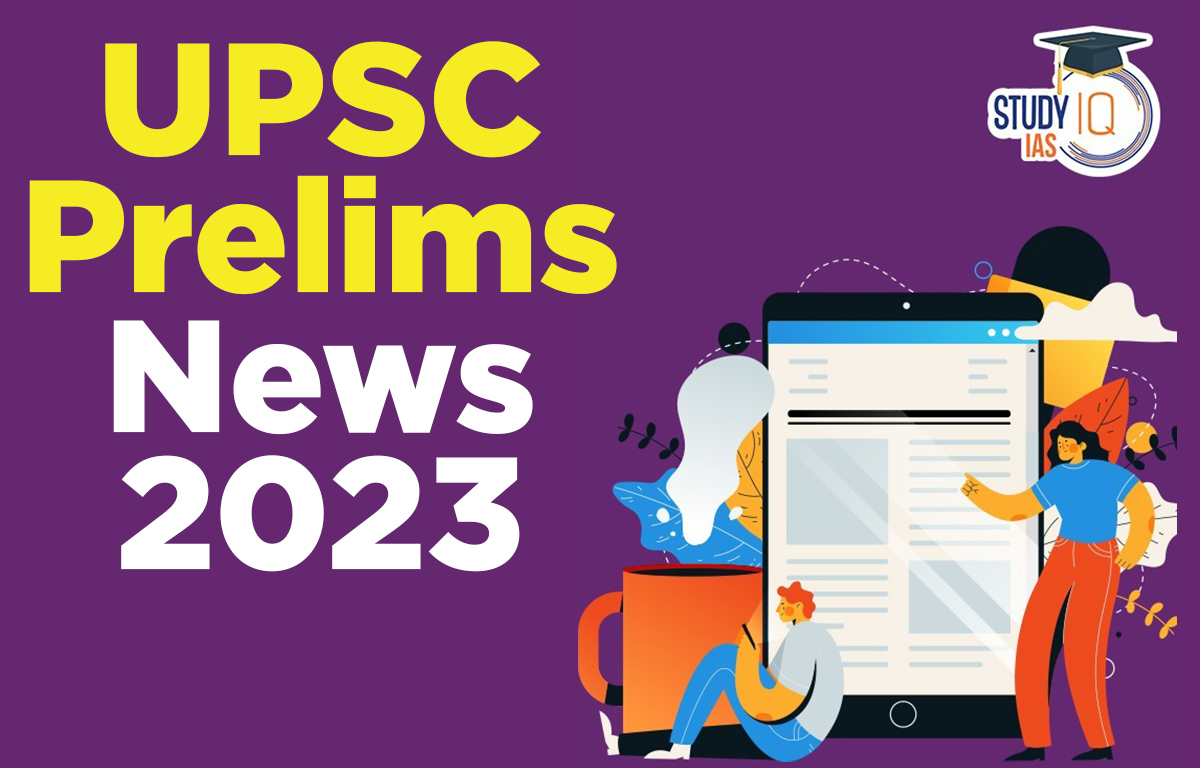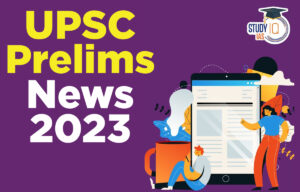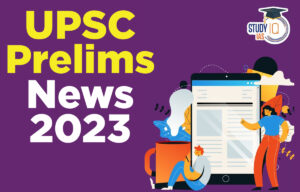Table of Contents
UPSC Prelims News of 21 February 2023
Exercise ‘Dustlik’
Context: The 4th edition of joint military exercise ‘DUSTLIK’ between the Indian Army and Uzbekistan Army commenced in Pithoragarh, Uttarakhand.
About DUSTLIK
- Focus: Joint exercise would focus on joint counter-terrorist operations in the mountainous and semi-urban scenario under UN mandate.
- The training schedule will focus primarily on sharing tactical-level drills and learning of best practices from each other.
- It will include field training exercises, combat discussions, lectures, demonstrations and culminate with a validation exercise.
- Both Armies will jointly train, plan and execute a series of tactical drills for neutralisation of likely threats, while learning to exploit new generation equipment and technology for conducting joint operations.
- Objective: It aims at enhancing understanding, cooperation and interoperability between two armies.
Significance
- Uzbekistan is significant to India in terms of security, connectivity to Iran and the Central Asian region, and as an alternative to Afghanistan.
UPSC Prelims News 20 February 2023
Shanghai Cooperation Organisation (SCO)
Context: The Ministry of Skill Development and Entrepreneurship (MSDE) organized a seminar on building capacities among Shanghai Cooperation Organisation (SCO) partner nations
About SCO
- SCO is a permanent intergovernmental international organization created in 2001.
- It is a Eurasian political, economic and military organization aiming to maintain peace, security and stability in the region.
- SCO Secretariat is based in Beijing to provide informational, analytical & organizational support.
- The SCO currently comprises:
- Eight Member States (China, India, Kazakhstan, Kyrgyzstan, Russia, Pakistan, Tajikistan and Uzbekistan),
- Four Observer States interested in acceding to full membership (Afghanistan, Belarus, Iran, and Mongolia)
- Six Dialogue Partners (Armenia, Azerbaijan, Cambodia, Nepal, Sri Lanka and Turkey)
Objectives of SCO
- Establishment of a democratic, fair and rational new international political & economic order.
- Strengthening mutual trust and neighbourliness among the member states.
- Promoting effective cooperation in -politics, trade & economy, research & technology and culture.
- Maintain and ensure peace, security and stability in the region.
- Enhancing ties in education, energy, transport, tourism, environmental protection, etc.
India’s First Hybrid Rocket
Context: India’s first hybrid sounding rocket by private players was launched from Pattipulam village, Telangana.
About the Mission
- Martin Foundation, in association with Dr. APJ Abdul Kalam International Foundation and Space Zone India, launched the Dr. APJ Abdul Kalam Satellite Launch Vehicle Mission- 2023.
- Participants: About 5,000 students were involved in the project. The selected students designed and constructed a student satellite launch vehicle (rocket) and 150 PICO satellite research experiment cubes that contained different payloads.
- Usage: The rocket can be used for research in weather, atmospheric conditions and radiations.
About Hybrid Rocket
- A hybrid-sounding rocket is a type that uses a hybrid rocket engine to power its flight.
- A hybrid rocket engine uses a solid fuel grain and a liquid or gaseous oxidizer to generate thrust.
- Hybrid-sounding rockets are often used by universities, government agencies, and private companies for scientific research and testing of new technologies because of their low cost.
Climate Engineering using Moon Dust
Context: A group of US scientists have proposed a scheme to combat global warming by creating large clouds of Moon dust in space to reflect sunlight and cool the Earth.
How Moon dust is used to cool the Earth?
- About: Using moon dust to cool the Earth’s climate is a form of space-based geo-engineering, which is a part of climate engineering solutions.
- Climate Engineering or Geoengineering is the intentional large-scale manipulation and modification of the Earth’s climate and environment to cool Earth’s climate.
- The plan: The proposal involves launching a spacecraft to mine dust on the Moon and shoot it out towards the Sun.
- The dust would stay between the Sun and Earth for around a week, making sunlight around 2% dimmer at Earth’s surface.
- The proposal involves launching some 10 million tonnes of Moon dust into space each year.
- Arguments for and against using moon dust to cool the Earth
| Arguments for | Arguments Against |
| It is an extreme solution worth considering given the urgent need to address the impacts of climate change.
It could have other potential benefits, such as protecting astronauts and equipment from harmful radiation in space. |
Critics have raised concerns about the potential risks and unintended consequences of manipulating the Earth’s climate.
They have also pointed out that it would be a costly and difficult undertaking. |
Rhododendron
Context: The latest publication of the Botanical Survey of India (BSI) has revealed that Darjeeling and Sikkim Himalayas are home to more than one-third of all types of rhododendrons found in India.
About Rhododendron
- Rhododendron, meaning rose tree in Greek, are a diverse genus of about 1,000 species of woody flowering plants in the heath family (Ericaceae).
- Range: They are native to the temperate regions of Asia, North America, and Europe, as well as to the tropical regions of south-east Asia and northern Australia and are notable for their attractive flowers and handsome foliage.
- They occur in a variety of habitats, including alpine regions, coniferous and broadleaved woodlands, temperate rain forests, and tropical jungles.
- They exhibit an enormous diversity of size and shape, from prostrate ground covers growing not more than few inches high to trees more than 100 feet tall.
- Importance: They are considered an indicator species for climate change and require a slightly acid soil to grow well.
- Darjeeling and Sikkim Himalayas comprise only 0.3% of India’s geographical area but is home to one-third (34%) of all Rhododendron types.
- They were first recorded in Jammu and Kashmir in 1776 and later in 1848 and 1850 in Sikkim and Darjeeling Himalayas.
- They are known as “Lali Guras” in local language and is the national flower of Nepal and the state tree of the state of Uttarakhand in India.
Polycystic Ovarian Disease (PCOD)
Context: According to a recent UNICEF report, about 9.13% of menstruating women in south India and Maharashtra suffer from PCOS, while 22.5 per cent have PCOD.
About PCOD &PCOS
- PCOD & PCOS differ in intensity, but both are lifestyle disorders.
- In PCOD, ovaries release many immature or partially mature eggs, which turn into cysts. However, PCOS is a more severe condition caused due to metabolic disorder.
- Both create havoc on women’s health, leading to irregular periods, obesity, growth of facial hair, acne, infertility and increased risk of diabetes and heart attack.
- It also leads to mental health issues and stress.
- Factors that contribute to the development of these conditions include:
- Hormonal Imbalances: PCOS and PCOD are associated with hormonal imbalances, specifically high levels of androgens (male hormones) and insulin resistance. Androgens interfere with the normal function of the ovaries, leading to the formation of cysts.
- Genetics: Women who have a mother or sister with the condition are more likely to develop it themselves.
- Lifestyle factors: Obesity and a sedentary lifestyle have been linked to an increased risk of PCOS and PCOD. These factors can contribute to insulin resistance and hormonal imbalances.
- Inflammation: Chronic inflammation in the body may contribute to the development of PCOS and PCOD.
- Environmental factors: Exposure to endocrine-disrupting chemicals (EDCs) may also contribute to the development of PCOS and PCOD. EDCs are chemicals found in many everyday products, including plastics, pesticides, and cosmetics, that can interfere with the body’s hormones.
- Some possible treatments for PCOD and PCOS include lifestyle changes such as weight loss and regular exercise, Medications that include hormonal contraceptives to regulate menstrual cycles, Fertility treatments: such as ovulation induction, intrauterine insemination (IUI), or in vitro fertilization (IVF), Surgery: to remove ovarian cysts or to reduce androgen-producing tissue in the ovaries and Alternative therapies: such as acupuncture, yoga, or dietary supplements such as myoinositol.
Carbon Credit Trading
Context: The Union Government has finalized a list of activities to be considered for trading of carbon credits.
Trading of Carbon Credits
- A list of activities that can be considered for trading in carbon credits in the international market under Article 6 of the Paris Agreement has been finalized by the Government.
- Overall 13 activities have been finalised under three heads – GHG mitigation activities, alternate materials, and removal activities.
- GHG Mitigation List: It includes areas like:
- Renewable energy with storage (only stored component)
- Solar thermal power
- Off- shore wind
- Green Hydrogen
- Compressed bio-gas
- Emerging mobility solutions like fuel cells
- High end technology for energy efficiency
- Sustainable Aviation Fuel
- Best available technologies for process improvement in hard to abate sectors
- Tidal energy, Ocean Thermal Energy, Ocean Salt Gradient Energy, Ocean Wave Energy and Ocean Current Energy
- High Voltage Direct Current Transmission in conjunction with the renewal energy projects.
- Alternate Material: Green ammonia received final approval as an alternative material.
- Removal Activities: Carbon Capture Utilization and Storage.
- The activities will initially be for first 03 years and may be updated/revised by NADAIPA.
Article 6 of Paris Agreement:
- Article 6 of the Paris Agreement allows countries to voluntarily cooperate with each other to achieve emission reduction targets set out in their nationally determined contributions.
- Under Article 6, a country will be able to transfer carbon credits earned from the reduction of greenhouse gas emissions to help one or more countries meet climate targets.
- Within Article 6, Article 6.2 creates the basis for trading in GHG emission reductions (or “mitigation outcomes”) across countries, according to the World Bank.
National Designated Authority
- India notified the National Designated Authority for the Implementation of the Paris Agreement (NDAIAPA) on May 30, 2022.
- The Authority is mandated to take decisions in regard to the type of projects that can participate in international carbon market under Article 6 mechanisms.
Why is this List Significant?
- By announcing the list of activities, India now has put its intent in public domain that it is seeking investments in these emerging technologies.
- Countries/companies shall invest and bring these technologies to India where they can then be indigenized. Indigenizing these technologies will help India achieve its own climate goals as well.
- Carbon credits in return will be provided to the concerned country or company which they can use for mitigation.
- These activities may be used to mobilise international finance in India.
Sealed Cover Jurisprudence
Context: The Chief Justice of India recently refused the ‘suggestions’ offered by the government in a sealed cover, signaling the possible threat of ‘sealed cover jurisprudence’ on the credibility of the judicial institution.
About Sealed Cover Jurisprudence
- Sealed cover Jurisprudence is the practice followed by the Supreme Court (and sometimes lower courts as well) of seeking and accepting information from government agencies in sealed envelopes that can only be perused by the judges.
- Rule 7 of Order XIII of the Supreme Court Rules, 2013 provides that the Chief Justice or the court can, through a judicial order, direct any document to be kept confidential in a sealed cover if publication of the records is “considered to be not in the interest of the public”.
- The court asks for information in a sealed cover broadly under two circumstances:
- When information is connected to an ongoing investigation.
- When it involves personal or confidential information.
- Problem with this procedure:
- It prevents parties from having a full overview of the charges against them, and
- It is not compatible with the idea of an open court and a transparent system of justice.
- However, the Supreme Court is now witnessing a turnaround, as the “routine” handing over of sealed covers in court by the state, the contents of which are unknown to the other parties erodes public confidence in the ‘open court’ principle of justice administration.
- The use of Sealed Cover Jurisprudence must be carefully balanced with the principles of due process, fair trial, and open justice, and be justified and proportionate to the specific circumstances of the case.
Carbon Border Adjustment Mechanism (CBAM)
Context: EU aims to use CBAM to level the field on the fight against climate change by incentivizing developing countries to reduce their greenhouse gas emissions.
Carbon Border Adjustment Mechanism of EU:
- The EU proposed the Carbon Border Adjustment Mechanism in 2021, in compliance with World Trade Organization (WTO) rules and EU’s other international obligations.
- Objective: CBAM aims to equalize the price of carbon between domestic products and imports, ensuring that the EU’s climate objectives are not undermined by production relocating to countries with less ambitious policies.
- Through CBAM, the EU claims to promote fair competition, leveling the playing field between EU and non-EU business partners.
- Working of CBAM:
- EU importers are required to buy carbon certificates based on the carbon price that would have been paid, had the goods been produced under the EU’s carbon pricing rules.
- The price of the certificates will be calculated based on the auction prices in the EU carbon credit markets.
- The amount of certificates required would be defined yearly by the quantity of goods and the embedded emissions in those goods imported into the EU.
- The CABM would apply initially to imports of cement, iron and steel, aluminium, fertilizers and electricity.
- If a non-EU producer is able to show that they have already paid a price for the carbon used in the production of the imported goods in a third country, the carbon cost can be fully deducted for the EU importer.
- Implications: Partner trade countries may retaliate against imports coming from the EU. Countries could impose barriers on EU imports in response.


 UPSC Prelims News 20 March 2023
UPSC Prelims News 20 March 2023
 UPSC Prelims News 17 March 2023
UPSC Prelims News 17 March 2023





















